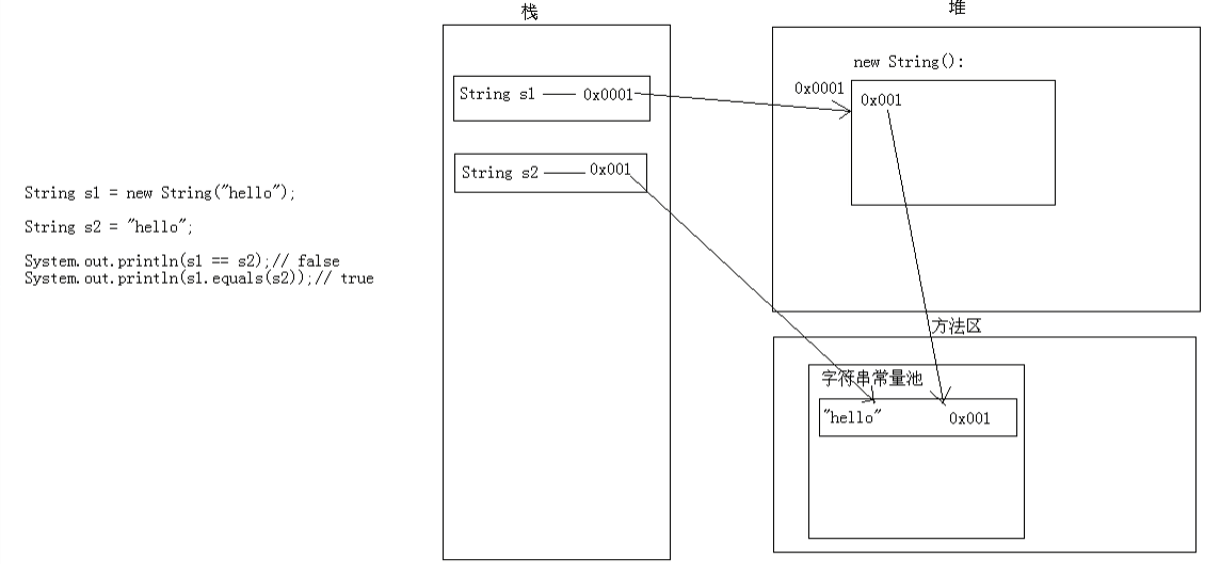看程序写结果1:
==:比较引用类型时 比较地址值是否相同
equals:只比较引用类型 比较地址值是否相同
而String类重写了equals()方法,比较的是内容是否相同
public class StringDemo1 {
public static void main(String[] args) {
String s1 = new String("hello");
String s2 = new String("hello");
System.out.println(s1 == s2);
System.out.println(s1.equals(s2));
String s3 = new String("hello");
String s4 = "hello";
System.out.println(s3 == s4);
System.out.println(s3.equals(s4));
String s5 = "hello";
String s6 = "hello";
System.out.println(s5 == s6);
System.out.println(s5.equals(s6));
}
}
- 1
- 2
- 3
- 4
- 5
- 6
- 7
- 8
- 9
- 10
- 11
- 12
- 13
- 14
- 15
- 16
- 17
- 18
- 19
- 20
- 21
- 22
- 23
内存描述图可以清楚地表达:

看程序写结果2:
字符串如果是变量相加,先开空间,再拼接。
字符串如果是常量相加,是先加,然后在常量池找,如果有就直接返回,否则,就创建。
public class StringDemo2{
public static void main(String[] args) {
String s1 = "hello";
String s2 = "world";
String s3 = "helloworld";
System.out.println(s3 == s1 + s2);
System.out.println(s3.equals((s1 + s2)));
System.out.println(s3 == "hello" + "world");
System.out.println(s3.equals("hello" + "world"));
}
}




